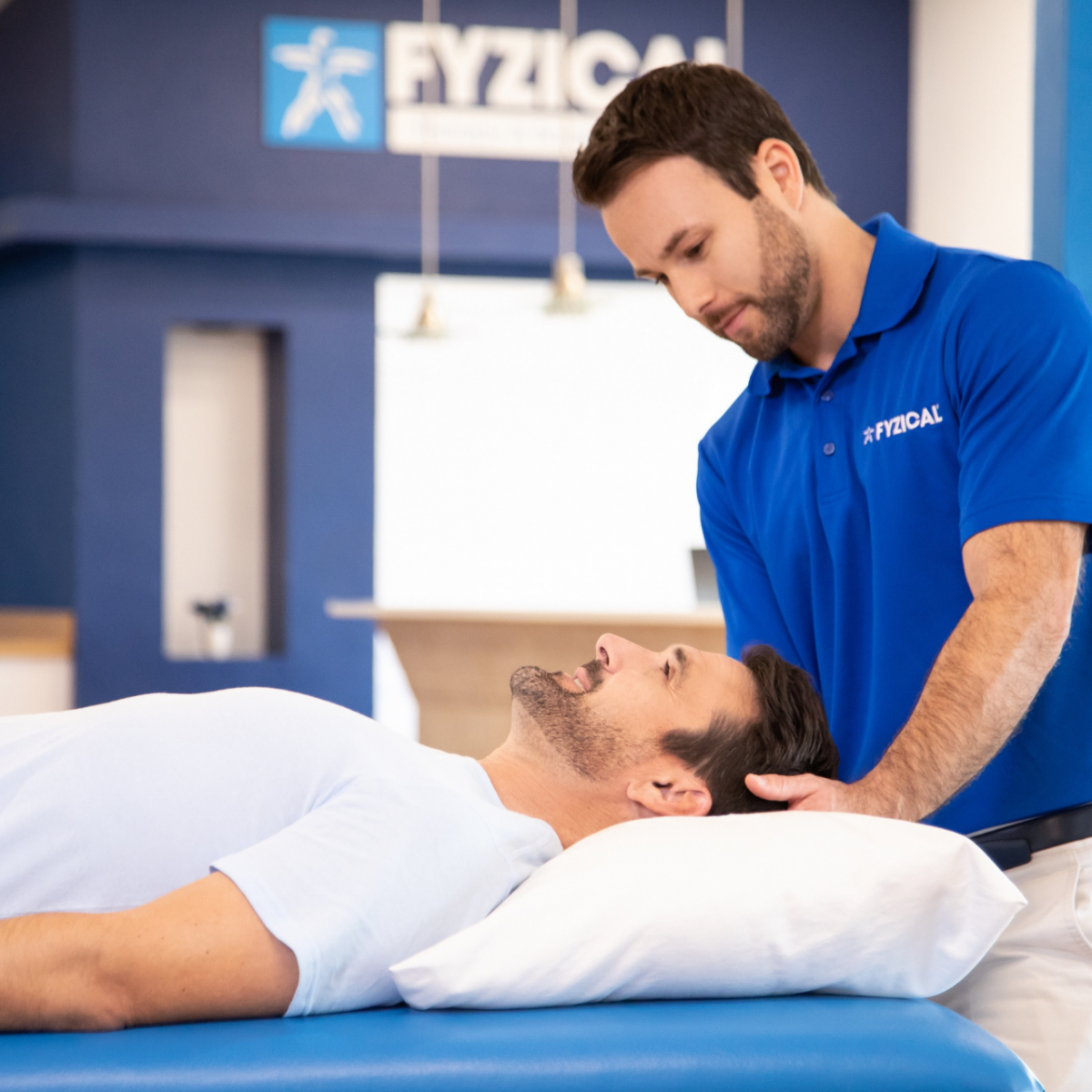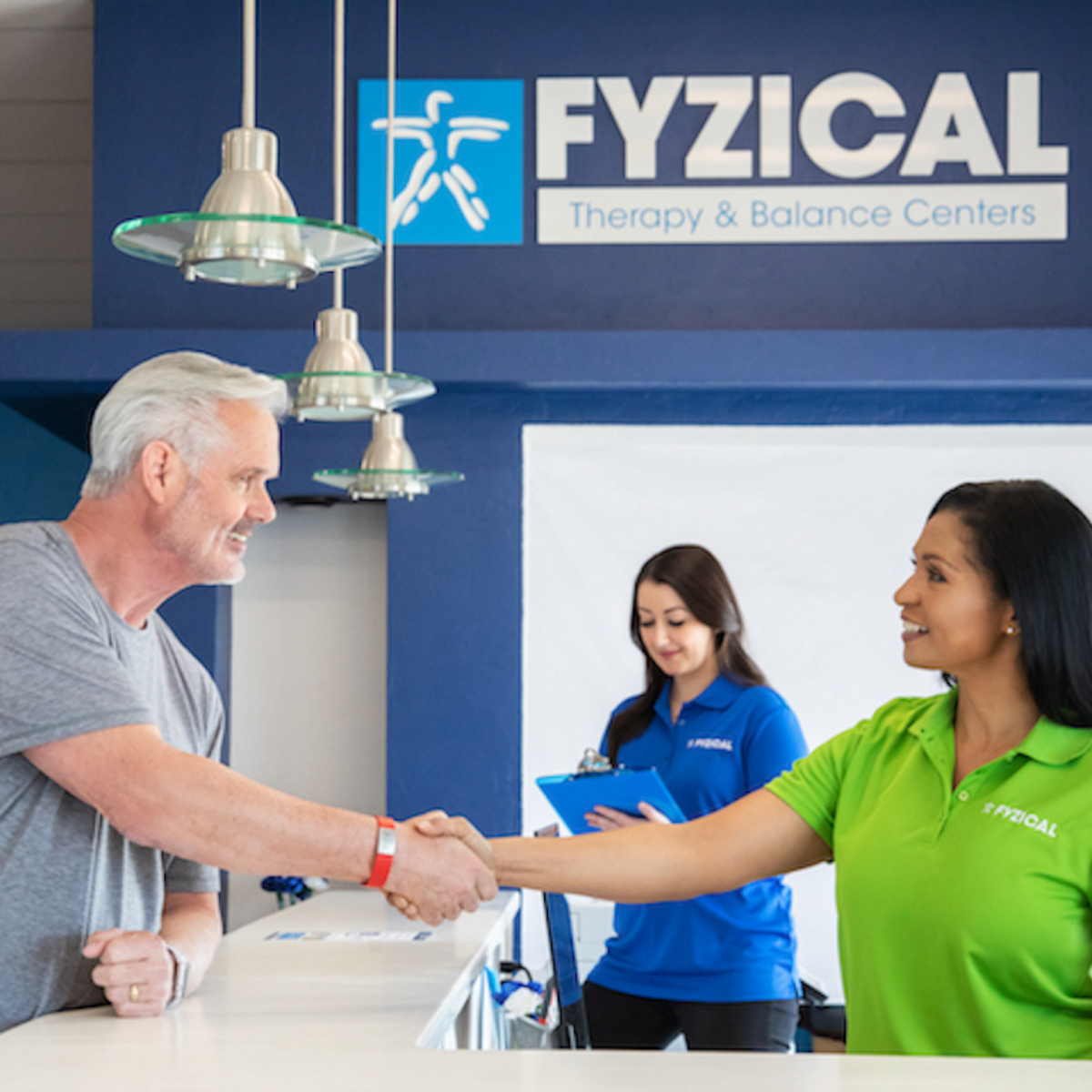TMJ Therapy
Physical therapy for TMJ Dysfunction at Plainfield

The jaw and the skull are joined by the temporomandibular joint. TMJ syndrome may result from an injury to this joint or from it being injured. Teeth misalignment, chewing gum, arthritis, teeth grinding, and jaw injuries are other causes of TMJ. Jaw discomfort, jaw popping, headaches, strained jaw muscles, locking of the jaw, pain in the temple, and earache are all signs of this TMJ disease.
At FYZICAL Therapy & Balance Center - Plainfield, IL, our physical therapists have assisted many people with TMJ issues and may assist you as well by providing customized physical therapy for TMJ pain. We care about your health and are patient-centered.
What causes TMJ syndrome?
Genetic factors, rheumatoid arthritis, trauma, tooth grinding, infections, autoimmune illnesses, and environmental factors are among the reasons that have been discovered.
TMJ problems can also be significantly influenced by poor posture. For instance, keeping your head forward all day while using a computer puts strain on your face and neck muscles.
Poor eating habits and sleep deprivation are other variables that might exacerbate TMJ symptoms.
Temporomandibular Joint dysfunction treatments Options for TMD/TMJ at FYZICAL Therapy and Balance Centers – Plainfield
Physical therapy is one of the most preferred treatments for TMJ. A physical therapist will assess your jaw's range of motion and unwind tight neck and head muscles. The neck, shoulder girdle, and thoracic spine are all thoroughly examined to find out whether any of these components are the source of your problems. Restoring normal function and muscle-joint connection are the two main objectives of physical therapy.
Other treatment options include:
Counseling and stress management
TMJ can be brought on by stress- or anxiety-related nail-biting, clenching, and grinding activities. Alternative therapies that are conservative and helpful include counseling and self-management-based therapies.
Oral splints or mouth guards
These are the solutions that are most frequently advised. When it comes to malocclusion, grinding, and clenching, a wearable oral device may be helpful. Additionally, it can assist in stabilizing the jaw to reduce jaw pain and discomfort.
Connect with us for TMJ physical therapy to help you reduce discomfort and enhance physical functionality
What Kind of TMJ doctors/ TMJ Therapists Do I Need?
Prior to developing a treatment strategy, it is crucial for our doctor to do a careful examination of your jaw joints and assess the severity of your condition. TMJ therapy should be personalized for each patient for the best outcomes.
Our TMJ therapists at FYZICAL Therapy & Balance Center - Plainfield, IL will work closely with you from the first consultation through diagnosis to developing and carrying out your specially tailored treatment plan. We'll check in with you later to see how things are going and to address any issues you may have.
When you first meet with a physical therapist, you’ll have a thorough evaluation and assessment. Then, we’ll educate you about your diagnosis and develop your individualized care plan, including daily activities designed to prevent injury. Your treatment will consist of hands-on, manual-based physical therapy, as well as exercises for strength and stability—all based on your unique needs and treatment goals.
At FYZICAL Therapy & Balance Center - Plainfield, IL, you’ll find a full range of following physical therapy services for patients of all ages, from newborns to older adults.
- Cardiopulmonary Physical Therapy
- Neurological Physical Therapy
- Pelvic Floor Physical Therapy
- Wellness Physical Therapy
- Auto and Work Injuries Therapy
- Chronic Back Pain Therapy
- TMJ Therapy
- Vestibular Therapy
- Pain management
- Dry Needling
- Foot therapy
- Sports therapy
- Massage therapy
- Balance Therapy
- orthopedic physical therapy
If you're seeking Tmj physical therapy, get in touch with FYZICAL Therapy & Balance Center - Plainfield, IL
FAQS:
-
How Can Physical Therapy Help TMD?
If you have pain in your jaw, you may have TMD. Physical therapy can be a helpful modality of care. A certified TMD physical therapist can help determine the cause of your pain and can improve the way your jaw moves.A physical therapist uses non-invasive treatments to decrease your pain and help restore the natural movement of your jaw.
Can physical therapy help temporomandibular joint dysfunction?
A range of problems can cause TMD, such as trauma from dental work, a car accident, or a blow to the face. It also can result from chronic teeth clenching and grinding at night, or tension in the neck and face from stress and poor posture. Physical therapists can evaluate, treat, and help you manage TMD to relieve symptoms, pain, and improve mouth function.Physical therapists are movement experts. They improve quality of life through hands-on care, patient education, and prescribed movement.
What is the most common muscle pain on TMJ disorders?
Myofascial pain. This is the most common form of TMD. It results in discomfort or pain in the fascia (connective tissue covering the muscles) and muscles that control jaw, neck and shoulder function.Should you stretch your jaw with TMJ?
Stretching exercises can help with TMJ pain during a flare-up. They reduce muscle and joint tension, offering longer-term reliefWhat muscle is directly affected by TMJ dysfunction?
Muscles that provide action to the TMJ are the masseter, temporalis, and pterygoid along with a group which are classed under suprahyoid and infra- hyoid muscles.

